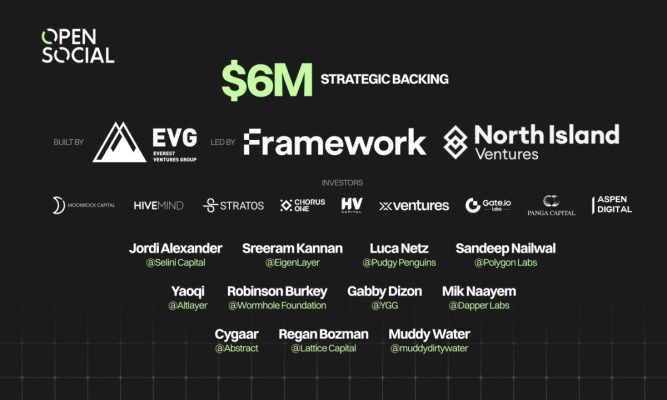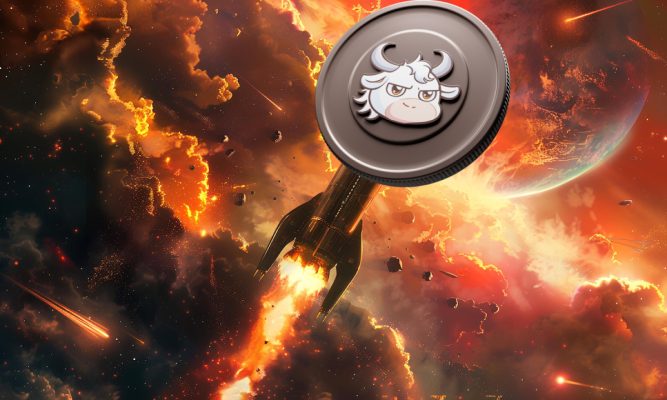Do you feel like a deer in headlights when it comes to understanding where to put your money? You won’t be alone. Even experts can sometimes feel like the market is fluctuating too much. That’s simply because it does. No investment is without its risk. But, along with the stock market, cryptocurrency is one of the most volatile investments. That’s because numerous factors at play influence the fluctuations in the market.
Everything from political to social influences causes dramatic fluctuations that either cause investors to gain or lose a lot of money. But that’s the same with every investment – the key is understanding where you’re putting your money and what to do with it. Let’s explore what coins experts think you should watch and potentially put some of your investment into.
Chainlink (LINK)
Chainlink is one you might not have heard about through the cryptocurrency grapevine. The Chainlink price is slightly more expensive than some of the coins we’ll focus on in this article, but it’s well worth putting on your watchlist.
Chainlink is a cryptocurrency and blockchain platform founded in 2017 by Sergey Nazarov and Steve Ellis. Chainlink aims to provide a decentralized infrastructure for connecting smart contracts to real-world data and events, known as “oracles”.
Oracles are necessary for smart contracts to interact with external data, such as the price of a commodity or the result of a sporting event. Chainlink’s decentralized oracle network provides a reliable and secure way for smart contracts to access off-chain data without relying on a single centralized source.
Chainlink’s cryptocurrency is called LINK, and it is used to pay for the services of node operators on the network who provide the data to the smart contracts. LINK can be bought and sold on various cryptocurrency exchanges.
Chainlink has gained popularity in the cryptocurrency community due to its innovative approach to solving the problem of accessing off-chain data in a secure and decentralized way. The platform has been integrated with many other blockchain projects, including Ethereum, Polkadot, and Binance Smart Chain, to provide oracle services for their smart contracts.
Cardano (ADA)
Cardano has consistently been linked to the most popular and up-and-coming cryptocurrencies on the market. Currently holding a value of $0.361, this coin is on the cheaper end of the scale of crypto value, meaning there’s still a long way for it to go.
Cardano is a cryptocurrency and blockchain platform founded in 2015 by Charles Hoskinson, who is coincidentally also one of the co-founders of the massively successful Ethereum. It is named after Gerolamo Cardano, an Italian polymath who made sizeable contributions to mathematics, physics, and philosophy in the 16th century.
The Cardano blockchain uses a proof-of-stake consensus algorithm called Ouroboros, which aims to be more energy-efficient than proof-of-work systems like Bitcoin. Cardano’s cryptocurrency is called ADA, used to pay transaction fees and for staking on the network. ADA can be bought and sold on various cryptocurrency exchanges.
One of the key features of Cardano is its focus on scientific research and peer-reviewed academic papers. The platform is built using Haskell, a programming language known for its mathematical precision and reliability, and aims to provide a more secure and scalable infrastructure for decentralized applications (dApps) and smart contracts.
Ripple (XRP)
Ripple, like Cardano, is one of the crypto coins that feature on the watchlists or must-have lists for 2023. It also made the top of the lists for 2022, a year where the value was turbulent, but the theory that it’ll be a high-flying coin remained the same. Experts predict that by 2030, it’ll be worth $17.05. Considering the current value is $0.42, there are potentially massive amounts to make from a small investment.
Ripple is a cryptocurrency and payment protocol founded in 2012 by Chris Larsen and Jed McCaleb. Ripple’s cryptocurrency goes by the trading name of XRP, and its uses facilitate cross-border payments and remittances.
One of the primary features of Ripple is its fast transaction times and lower transaction fees than usual – compare it to the cost of ETH transactions, and you’ll see what we mean. That’s achieved using a consensus algorithm called the Ripple Protocol Consensus Algorithm (RPCA), which allows for near-instant transaction confirmation and settlement.
Ripple also offers a suite of payment products for financial institutions, including xCurrent, xRapid, and xVia. xCurrent is a real-time gross settlement system that allows banks to settle cross-border payments seamlessly. xRapid uses XRP as a bridge currency that enables faster and cheaper cross-border payments. xVia is an API that allows businesses to send payments through multiple payment networks using a single standard interface.
Conclusion
Investing in cryptocurrency is a journey, and having three primary coins with massive potential is enough to focus on – and the above coins will give you a diversified portfolio to build upon. It’s essential to gain an in-depth the tokens you’re investing in rather than following trends. There are so many factors that influence success, and the above-mentioned coins aren’t going to deliver you riches overnight. They’re all long-term investments with unprecedented growth potential over the next decade or sooner if the market swings in their favor.

